Jo Chipchase has personally experienced mis-directions in Spain, causing calamity – and that was before the advent of AI. Now, we must take a reality check (or actual map) when trip planning, particularly to avoid AI hallucinating unwelcome situations.…
I REMEMBER the era when the most unreliable device in the car was your TomTom. This was before the time of AI hallucinating tourist destinations, highlighting the dangers of relying on it, even endangering people by sending them into rough, unchartered terrain.
I’ll never forget a 10hr drive to Santander with my (then young) sons. I was reviewing a new (now defunct) ferry service, to France, for a travel magazine (also now defunct), and we had a ‘comp’ (freebie). After the TomTom suddenly tried to route us to Bilbao, it then announced, “camino desconocido” (road unknown) and went blank. This was shortly before we were supposed to be boarding the ferry. What followed was a panic-striken drive around nondescript rural roads, ending with a near read-end shunt with a Guardia Civil car in a lay-by. After a hasty conversation with the officers, in hysterical Spanglish, they pointed us to the actual ferry port. We made it aboard with a couple of minutes to spare and just enough time to down a ‘vino blanco’ (for the stress) before the ship’s horn sounded. No word of exaggeration!
Another time, near Málaga Airport, the approach road had recently changed – creating the exact same approach/junction that is used today, near San Julian. This hadn’t updated on Google Maps. Having missed the new junction, my satnav told me to “turn right now”. Had I obeyed, I’d have driven straight off the motorway viaduct. My passenger, who needed the toilet, was complaining about the unplanned detour missing her hotel (hard to find, even without the GPS error). She made it in time.
Another two “hilarious” (and similar) examples involved (a) Google Maps trying to route my pickup truck down an almost vertical slope in an olive grove at Santa Fe, Granada and (b) the exact same thing – only volving my old Berlingo and another vertical, rocky slope in the infamous Los Guájares fire zone. The embers were still being extinguished and Medio Ambiente vehicles were emerging!
The brave new world of AI hallucinating your trip
Fast-forward to 2025, and our navigational aids have “evolved” from plain GPS to AI “guidance”. Yes, Artificial intelligence doesn’t just get lost in its own world – we have AI hallucinating entire destinations, which can lead to unexpected adventures. Instead of a wrong turn, you now face an imaginary holiday to somewhere that existed in a glitchy “large learning model”, somewhere on a server in California, further complicating our travel plans with AI hallucinating potential risks.
There are verified global cases of AI hallucinating travel destinations that do NOT exist:
These examples show the potential dangers of AI hallucinating your trip itinerary, where what you see is not always what you get. Always double-check your destinations!
- The phantom cable car of Malaysia (2025): A couple drove 400km to ride a non-existent “Kuak Skyride” after watching a hyper-realistic AI video with a generated presenter. The story was confirmed by 20 Minutos, El Confidencial and AS Diario (July 2025).
- The “Sacred Canyon of Humantay,” Peru: Travellers sought a canyon that was, according to Maldita.es (Sept 2025), an AI-generated mash-up of local names. How lovely and… humane.
- The haunted hermitage, Tenerife: In May 2025, Cadena SER Tenerife reported tourists arriving at Taganana to find no church at all – just a viral AI video.
- AI hallucinations in search engines: The Times and Futurism (Oct 2025) documented Google’s “AI Overviews” confidently describing attractions that never existed. And Google, arguably (by personal experience) has built an AI hallucinating less that rival models.
In short, the machines have made strange mistakes, then (in some cases) re-ingested their own errors in their large learning models. Frequently, these AIhallucinations come with flowery adjectives about “cultural and historic importance”. You can ask the AI not to use unverified blog content or hyperbole…. but still!
Andalucía’s own navigational nightmares
Here in Andalucía, the chaos is more personal. My navigation apps have long waged war on city trips. In Granada’s Albayzín, I recall (not fondly) Google Maps repeatedly sending me to the same brick wall, until I felt like screaming. It also directed my VW Transporter van (RIP) into cobbled streets where it was very difficult to make the sharp corners. There was risk of incurring a ‘multa’ (penalty) for entering bus-only lanes nearby. Eventually, I stopped trying to drive into the Albayzín. I recall, also, an incident of not being able to exit a carpark because it wasn’t designed for vans.
Another horror-show occurred in 2023, when – returning from a relaxing visit to Cabo de Gata – Google Maps directed me into a dead end in El Puche ‘barrio’ in Almeria. I recognised the ‘hood from ‘Zazza el Italiano’ on YouTube. The handsome Zazza is an intrepid man who explores socially-deprived ‘barrios’ world-wide and documents their occupants’ lives and struggeles. Meanwhile, my Nikon camera was carelessly flung over a front seat rest. Instead of seeing an exit towards Granada, I spotted a dog with three legs on a buggy (I was sure I saw it on the documentary!), and people rummaging through the nearby bins. I have never backed out of anywhere quicker, with little regard for my vehicle’s suspension or bodywork.
More recently, in Salobreña old town, Google Maps decided that my five-metre-long pickup could negotiate a steep and narrow street, barely wide enough for a smart car to turn the horrendous corner at the top. Realising I was stuck, and behind me was a row of tightly-parked cars, I froze. A local resident – clearly used to this scenario – appeared and calmly reversed the pickup down the hazardous slope without mashing into any other vehicles. Meanwhile, I stood pale and traumatised, cursing Google Maps.
Not to mention an attempted trip to “Tabernas Mini Hollywood”, where my family ended up (with another car) in a dead-end piece of scrub land in Tabernas desert!
Once, while traversing Madrid’s onion-like motorway bypass network, the GPS routed us through the longest tunnel I’ve ever seen…. to a rubbish dump! The kids loved it! Such fun!
There’s also the terrible situation of the GPS signal failing or the device turning off because your charging cable or plug has failed. You’re stuck in a spaghetti-like one-way system, or the middle of nowhere, wondering what to do next!
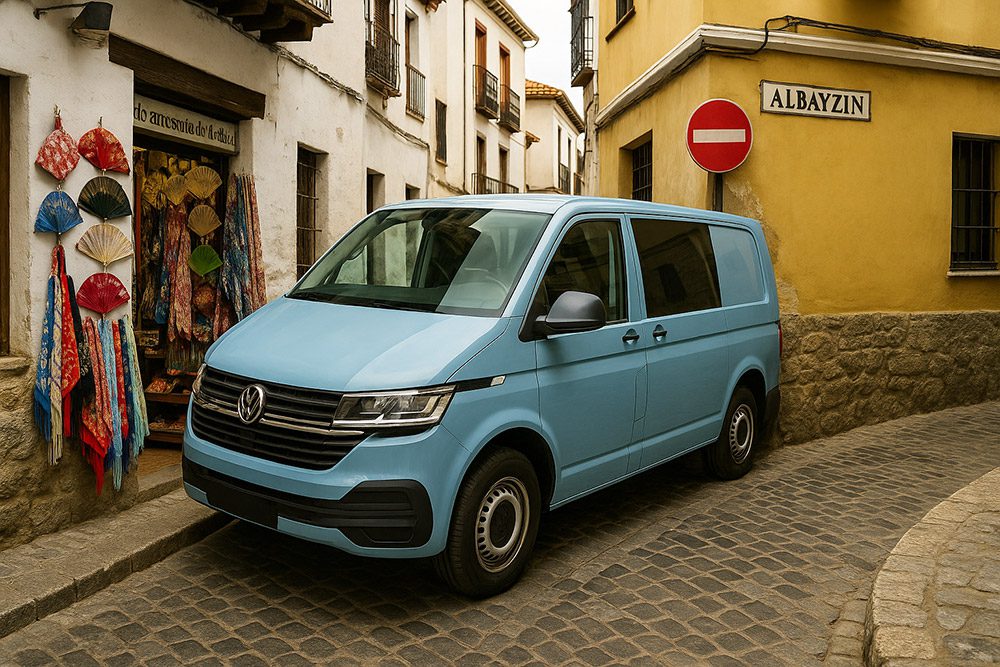
The “ancient village” that never existed
Now, the situation is even worse. Rather than being directed into hazards by mere GPS, AI hallucinating “a fun day out” can return a destination unknown. This means you have wasted your day/time/diesel or put yourself into unchartered territory, maybe not fit for people and their vehicles.
In my favourite example, an early version of ChatGPT described “the ancient village of Puente Palo, high above Cáñar.” It sounded enchanting: cobbled lanes, shepherds, perhaps a church. As I know the area well, I found this information, frankly, gobsmacking!
This situation further exemplifies the risks associated with AI hallucinating, and inventing the worst rubbish I’ve ever seen!
Puente Palo exists, but as a network of forestry tracks, a large picnic area, an old bar/restaurant falling into disrepair, and a waypoint on the GR-240 Sulayr trail, the new Barjas ‘acequia’ trail, and other marked routes.. No cute cottages, no church, no “charming village” – just pine trees, tranquillity, and mozzie bites at dusk.
Over the years, this area was modified by Spain’s ‘forestal’ workers and engineers. Down the valley of the Rio Chico – back in 1943 – the impressive Dique 24 dam was built to prevent flooding of the surrounding countryside after heavy rainfall. It isworth a visit, lying on the GR7 trail between Cañar and Soportújar.
There were also projects to improve road access (forestry tracks) to maintain the tree-filled area against fire risk This zone is popular with hikers, mountain bikers, and horse riders. However, it is not a lost hamlet worthy of legend!
In a world where AI hallucinating can mislead even the most seasoned travellers, reliance on accurate information is paramount – and safer.
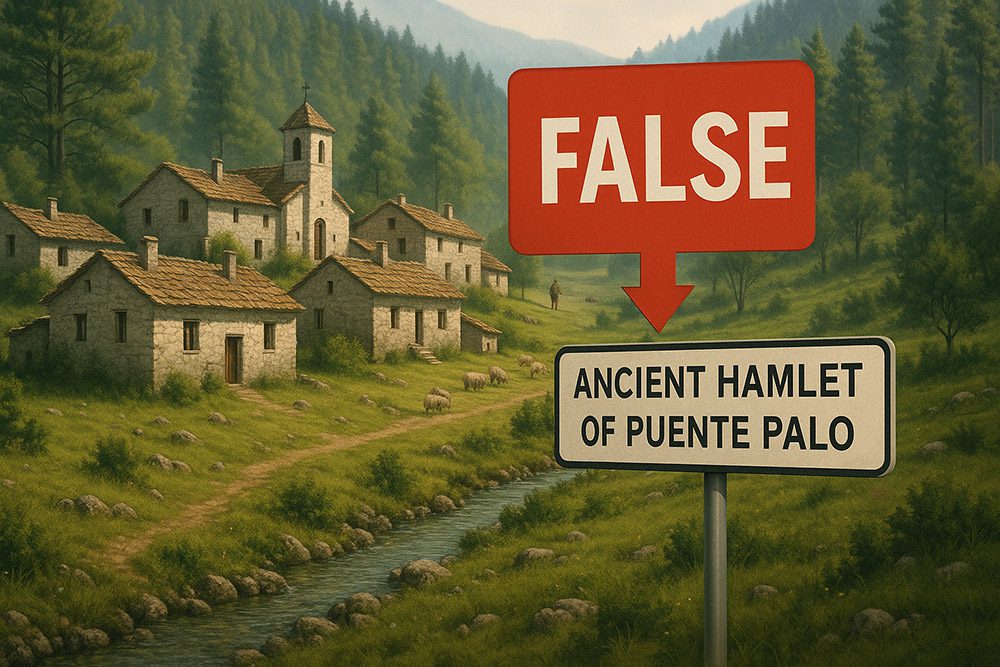
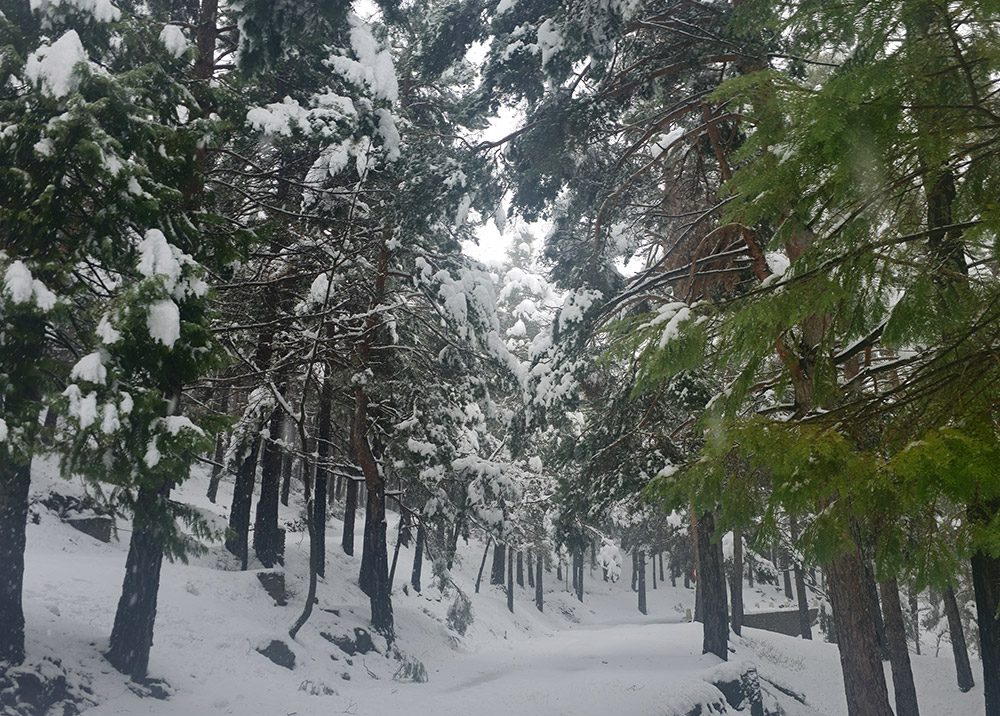
Fake monuments are rife with AI hallucinating them all
I was equally surprised, when researching landmarks along the Costa Tropical, that an earlier Chat GPT version attributed the same monument to every single coastal village from La Rabita to Castell del Ferro. Of course, this ancient tower was “charming” and “part of the culture of the area”. It’s good to have local knowledge – to avoid making a fool of yourself by sharing false travel information!
I also “fondly” remember the time that Chat GPT said the beach at Almuñécar was called San Miguel – named after a historic ‘castillo’ in the vicinity – rather than San Cristobal. Whoops! Any research into geographic features and landmarks must be fact-checked zealously, using other sources, such as municipal travel and tourism sites.
If you are writing travel guides, fail to do this at your own peril.
Visit genuine monuments – not AI hallucinations!
Andalucía, with its wealth of history, landmarks, and tourist destinations, is fertile ground for AI hallucinating. Why consult AI for travel information when there are so many verified sources? Ask a chatbot for “the most beautiful Moorish castle on the Granada coast” and it might confidently invent a “Nasrid fortress in Salmuñécar” and extol the benefits to the local heritage, before sending you to a piece of wasteland.
The real monuments, however, are worth visiting. Some include – on the Costa Tropical:
- Salobreña Castle: Its history dates from the 10th century and it was a Nasarid citadel in the 14th and 15th centuries.
- Almuñécar’s Castillo de San Miguel: An Arab fortress on space previously occupied by Phoenicians and Romans. The castle’s structures date back to the Muslim period, and it was a holiday home for the Nasrid dynasty in the 13th century.
- Roman Aqueduct of Río Seco: Still visible in five sections across Almuñécar’s valleys and built in the 1st century AD to supply water to the Roman city of Sexi!
- Columbarium Torre del Monje: It is a a funerary pantheon (tomb) from the 1st century AD, located two kilometers from the town of Almuñécar in the Torrecuevas neighborhood.
- Motril’s Pre-Industrial Sugar Cane Museum: This is located on the ruins of an old sugar mill. It features original-scale reproductions of mills and wooden presses, cooking rooms, and multimedia presentations to show how sugar was made and commercialised between the 13th and 18th centuries.
- Peñón del Santo & Peñones de San Cristóbal: This comprises three rocks called El Santo, En Medio, and Afuera, and has symbolic value for Almuñécar.
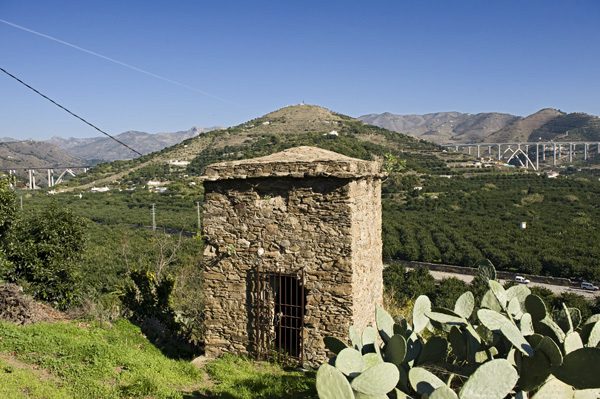
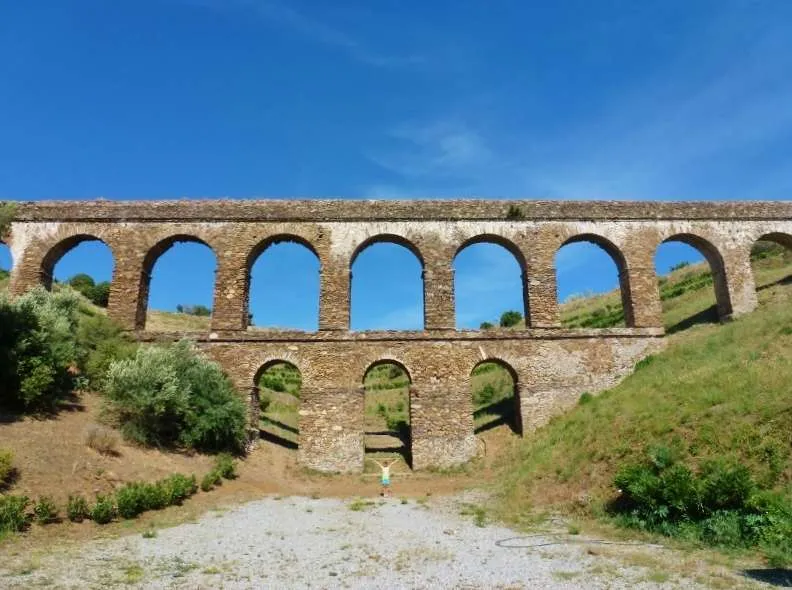
Avoiding your very own AI travel fiasco
Without doubt, it’s crucial to approach information from AI with caution to avoid falling victim to AI hallucinating inaccuracies.
With people being fooled by obvious AI fake videos – ranging from political spin to kittens – it pays to do your own research, using known travel sites such as Tripadvisor, and guides from town halls. Visiting the spa town of Lanjarón? Head straight to the tourism portal – not a chatbot!
The main take out from this article is – have some commonsenes and don’t ‘oooh and ahh’ over a possibly fake viral video showing the “best” spot to take a selfies (where you might fall off and die!). Always cross-reference your trip itinerary on an actual map or seek local knowledge from respected people. The time I was sent down a dangerous and crumbling track by a sadistic hiker highlights the need to ask the tourism office, not some nutters in a bar!
You don’t want to be that person being rescued by INFOCA from a steep ‘barranco’, where you’ve accdentally started a fire; heading on to a difficult trail in flip-flops; or visiting an ancient monument that never existed in the first place.
Back to reality
Social media has arguably gone too far, with 30 second glimpses of fantastic selfie spots and Instagram models posing on fake private jets that are actually studio sets costing 50e an hour. As my elderly Dad said, there is no harm in having an old-fangled paper map in your car, or at least examining the route before you set off. This would have stopped yours truly from almost driving to Cordoba en route back from Comares “the scenic back way”. And, on another notable occasion, to Alora instead of Velez-Malaga, wasting 75e of fuel.
If you put all your trust in apps and AI, you may still need a Guardia Civil Trafico officer to direct you 2hrs back in the opposite direction. And, heaven forbid, there should be another 24hr power cut across Spain, turning off all the devices!

